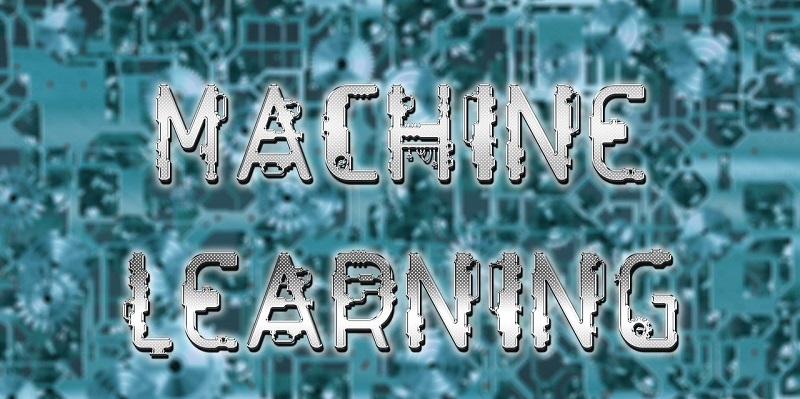Understanding the fundamental algorithms is crucial for beginners diving into the world of machine learning. This article aims to provide a comprehensive overview of these algorithms, their applications, and how they form the building blocks of modern data analysis techniques. Let’s embark on a journey through the world of machine learning algorithms.
A Simple and Widely Used Algorithm in Machine Learning
Linear regression is one of the simplest and most widely used algorithms in machine learning. It is primarily used for predicting continuous values based on input features. By fitting a straight line to the data points, linear regression allows us to make predictions and uncover relationships between variables. With its intuitive nature and wide applicability, linear regression serves as a strong foundational algorithm in machine learning models.
A Tool for Binary Classification Tasks
Logistic regression is a powerful algorithm used for binary classification tasks. Instead of predicting continuous values, it estimates the probability of an event occurring based on input features. By fitting an S-shaped logistic curve to the data, this algorithm effectively differentiates between two classes. Logistic regression finds applications in diverse fields, including medical diagnosis, fraud detection, and sentiment analysis.
Flexible Algorithms for Classification and Regression
Decision trees are versatile algorithms that can be used for both classification and regression tasks. They provide a visual representation of decision-making processes by splitting data into hierarchical structures of nodes and branches. By asking a sequence of questions, decision trees classify or predict outcomes based on feature values. The simplicity, interpretability, and flexibility of decision trees make them widely used in fields such as finance, healthcare, and marketing.
Combining Decision Trees for Enhanced Accuracy and Robustness
A random forest combines multiple decision trees to improve the accuracy and robustness of predictions. By aggregating the results of individual trees, this algorithm reduces overfitting and provides more reliable predictions. Random forests are powerful learning models with applications ranging from credit scoring to image recognition. Their ability to handle high-dimensional data and nonlinearity makes random forests a popular choice among data scientists.
Support Vector Machines (SVM)
Support Vector Machines (SVM) are a powerful algorithm that finds hyperplanes to separate data points of different classes. They maximize the margin between classes, enabling efficient classification. SVM has shown excellent performance in various domains, including image recognition, text classification, and bioinformatics. With its ability to handle both linear and nonlinear problems through kernel functions, SVM remains a prominent algorithm in the machine learning landscape.
K-Nearest Neighbors (KNN)
K-Nearest Neighbors (KNN) is a basic and straightforward algorithm for classification and regression tasks. KNN assigns a data point to a class based on the majority vote of its k-nearest neighbors. With its simplicity and ease of implementation, KNN finds applications in recommendation systems, anomaly detection, and pattern recognition. However, the choice of an appropriate distance metric and k value greatly impact the algorithm’s performance.
Naive Bayes
The Naive Bayes method is extensively used in text categorization and spam filtering tasks. It leverages Bayes’ theorem to calculate the probability of a document belonging to a particular class based on word frequencies. Despite its assumption of independence between features, Naive Bayes often works surprisingly well and has found success in email filtering, sentiment analysis, and document classification.
Unsupervised Learning Algorithm for Clustering Similar Data Points
K-Means is an unsupervised learning algorithm used to cluster similar data points into groups. By iteratively assigning and updating centroids, K-Means minimizes the within-cluster variance to form clusters. This algorithm has applications in customer segmentation, image compression, and anomaly detection. K-Means is intuitive, efficient, and widely used for exploratory data analysis.
Neural networks, inspired by the structure of the human brain, are at the forefront of modern machine learning. These deep learning models consist of interconnected layers of artificial neurons that learn patterns and relationships in complex data. With breakthroughs in computer vision, natural language processing, and speech recognition, neural networks have achieved remarkable success across various domains. Their ability to handle large-scale datasets and extract intricate features makes them a powerful tool in data analysis.
In this article, we explored the fundamental algorithms that serve as the backbone of modern machine learning. Linear regression, logistic regression, decision trees, random forests, support vector machines, K-nearest neighbors, Naive Bayes, K-means, and neural networks all contribute to the diverse toolbox of algorithms available to data scientists. Understanding these algorithms and their applications is essential for anyone venturing into the fascinating world of machine learning. By building on this foundation, we can navigate the complexities of real-world data to derive meaningful insights and make accurate predictions.

